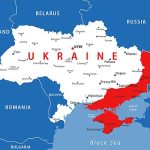
Jay Schweikert and Isaiah McKinney
This week, in Sackett v. EPA, the Supreme Court closed the book on Mike and Chantell Sackett’s 19 year saga of trying to build on their land. In 2004, the Sacketts purchased property 500 feet from the shores of Priest Lake, Idaho. In 2007, after they started to fill in wet spots in their property so they could build a home, EPA officials informed the Sacketts that their property was a wetland adjacent to a tributary that fed into the lake, and therefore counted as “navigable waters” under the EPA’s jurisdiction pursuant to the Clean Water Act (“CWA”). The Sacketts would need to get a permit if they wanted to build, and a permit, if the Sacketts could get one, would cost them hundreds of thousands of dollars. The Sacketts challenged the EPA’s decision, but the lower court decided the EPA’s order was not “final,” so the Sacketts could not challenge it. The Sacketts appealed, eventually going to the Supreme Court in 2012, which held that the EPA’s decision was a final order and the Sacketts were able to challenge it.
11 years later, the Sacketts were back at the Supreme Court, this time asking whether their property could be regulated as “waters of the United States” under the CWA. This is the fourth time the Supreme Court has addressed the scope of this provision—and this time the Court got it right.
The story of CWA regulation and litigation is too long and confusing to tell here in full. But the last time the Supreme Court addressed the scope of “navigable waters”—which the statute further defines as “waters of the United States”—in 2006, the Court split 4–1‑4, so there was no controlling majority. The two main opinions from that case, Rapanos v. United States—written by Justices Scalia and Kennedy respectively—disagreed on the test that should be applied to determine if a wetland was “waters of the United States.” Justice Scalia’s test would apply to “permanent, standing or continuously flowing bodies of water,” and wetlands that shared a “continuous surface connection” to such permanent bodies of water. Justice Kennedy considered this term more broadly to include all bodies of water that had a “significant nexus” with navigable‐in‐fact waters.
Lower courts split on which test to apply, but most courts applied Justice Kennedy’s broader test. One of the issues with his test, however, was that “significant nexus” had no real limiting principle. Land that was in no way connected to navigable waters, but which was damp for a couple months of the year, could be regulated as “waters of the United States” because sufficient water molecules from that land interacted with nearby bodies of water. Justice Kennedy’s test was indeed expansive.
This week, the Court unanimously rejected the significant nexus test and held that the EPA lacked jurisdiction to prohibit the Sacketts from building on their land. Justice Alito, writing for the majority, essentially adopted Justice Scalia’s test from Rapanos. Quoting from Justice Scalia’s opinion, Justice Alito explained that the term “waters of the United States” is limited to “only those relatively permanent, standing or continuously flowing bodies of water forming geographical features that are described in ordinary parlance as streams, oceans, rivers, and lakes.” But amendments to the CWA, in a provision discussing permits, state that the EPA can regulate not only “waters of the United States,” but also “adjacent wetlands.” These “adjacent wetlands” must not be distinct and separate from “waters of the United States,” Alito explained, because otherwise the amendments would be drastically changing the scope of the statute via an ancillary provision. Congress was not changing the scope of the CWA by allowing permits for wetlands. Rather an “adjacent wetland” is an “indistinguishably part of a body of water that itself constitutes ‘waters’ under the CWA.” Therefore, as Scalia wrote in 2006, “adjacent wetlands” must be connected to navigable waters via “a continuous surface connection.”
This decision brings clarity to an area of the law that has been infamously obtuse. The scope of the CWA has bounced back and forth for decades, leaving farmers, homebuilders, and property owners across this country in confusion on what they can and cannot do on their property. Not only did the Supreme Court pen a happy ending for the Sacketts—they will now get to build their dream home—but property owners everywhere have received much needed clarity on whether their property qualifies as “waters of the United States.” Not only did property rights win the day, but so also did clarity and simplicity.








